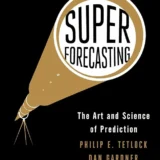
OBIR: Occasional Biased and Ignorant Reviews reflecting this reader’s opinion.

LACKINGTON’S magazine – issue #24, Fall 2021.
Publisher: Lackington Press, Ottawa, Ontario, Canada.
Editor: Ranylt Richildis
Cover Art: Sharon J. Gochenour
Interior Art: Mario Musa, P. Emerson Williams, Carrion House A.K.A. Luke Spooner, Kat Weaver, Michelle Modestino, Richard Wagner, and Hanna Seakins.
Dr. Ormeau’s Botanical Menagerie – by Morgan L. Ventura
Premise:
Dr. Ormeau is a botanist who has created plant equivalents of robots. His purpose? To provide a more eco-friendly alternative to machines. Among other things, this avoids any problems to do with artificial intelligence. But what about natural plant intelligence?
Review:
The idea of an ambulatory Date Palm capable of going on shopping errands and possessing a wild passion for poetry is rather charming. But the underlying moral and ethical problem lies at the very core of civilization itself. Civilization is based on labour, on what we construct and fashion, be it flint knives or fluffy pom-poms. Specialization is fine, but mass labour, for thousands of years, was based on various forms of slavery. The industrial revolution transformed society. Created new forms of slavery some would say, but also led to widening education, greater expectations, and a belief, however utopian, that all humans should be treated decently. How do we accomplish that?
We live in an age when children are worked to death to wrestle rare earths out of jungle soil, when mercenary armies conduct reigns of terror to control the blood diamond trade, when factories producing the gadgets we love are festooned with suicide nets to prevent the “happy” workers from killing themselves. There is horror behind many of the things we consume. Hence the common science fiction trope (a fantasy, really) that human labour can be replaced by machine labour, leaving humans free to wallow in philosophy and comfort, or something.
What do billions of people do when they no longer need to work? Live in an intellectual paradise of endless creativity? Lots of SF addresses this issue. And what about self-aware, sentient robots? Will they enjoy being the labour class? Many more tomes have appeared dealing with that question. Two things seem certain: there is no simple solution, and Man’s inhumanity to Man appears to be a permanent state of affairs.
In this story, “plant” robots are proposed. A phenomenon not dependent on high technology so much as high botany. No more worry about diminishing metals/mineral resources. You want workers? Just grow the darn things. Don’t need to manufacture them. Solves the resource problem.
But not the problem of workers who don’t want to be workers. This is approached, not in the form of a dreary political tract, but through the medium of modern bureaucratic shenanigans that are both thought-provoking and delightfully amusing. Three main characters manipulate and joust with each other.
You have Dr. Ormeau, a genius who believes he has solved the labour conundrum but laughs at the idea of plant rights.
Then there’s Dr. Agnes Fortune, a representative of UNESCO, who wants Dr. Ormeau’s menagerie removed from Stromboli Island because their artificial nature is ruining the prospects of that Island’s natural flora and fauna being declared a World heritage site.
And finally, poor Roger, eager for everyone to come out as winners, but slowly and surely becoming less naive as shenanigans unfold. What’s a poor plant to do?
Everything is revealed through logs and diary entries and court documents. The theme is serious and important, possibly the most important we face as we stumble toward our future, but it’s treatment in this story is wonderfully entertaining. It offers the hope that our own incompetence prevents us from destroying ourselves. A positive, upbeat story.
I, Mandragora – by Phoenix Alexander
Premise:
A large Mandragora (Mandrake) plant his been ripped from its forest home to attend a King in his castle. The plant is expected to sing for the King’s guests.
Review:
Mandragora plants contain a wide variety of Alkaloids. It can be processed for myriad medicinal purposes but it is, in essence, a source of deadly poison. This, combined with roots sometimes resembling a human figure gave rise to the legend it screams when pulled from the earth and kills the person who harvests it.
In this story the Mandragora resembles a woman, is as large as a human being, and is very old, patient, and knowledgeable. Pulling this particular Mandrake out of the ground and holding it captive is something akin to summoning a demon. Be careful what you ask for.
And yet, and yet, the Mandragora is more human than the humans expect. In a way, it embodies everything that humans strive for. While portraying the thoughts and emotions of a plant, the story actually casts aside the veils we use to hide our worst aspects from ourselves. Not a flattering portrait. I would classify this story as a subtle, yet frightening allegory that would apply to any era and not just a medieval setting. Fantasy/horror at its best, offering insight into the very soul of humanity. Grim and dark. Powerful.
My Face to the Sun – by Kelly E. Dwyer
Premise:
The family farm isn’t much fun for a young man watching Agro Business “Suits” and frequent mutations reducing profitability year by year. He loves his parents, but what’s in it for him?
Review:
Long ago a subplot involving a wealthy guy (University student? Spoiled Rich kid? Hasn’t entered his father’s business yet?) pursuing a teenage boy with flowers and offers of hot lust would be controversial, to say the least. To the main character it’s just an amusing distraction from the larger issue of his ultimate fate. A critic has to look at the deeper symbolism. I think the older kid reflects the entitled opinion of city folk who take food for granted and view farm people as unimportant. Granted, he has a personal motive, but it’s apart from his basic contempt for the lad and his folk.
What’s being portrayed here, I think, is the concept that food is just a product on a shelf, and that even in a future when food is scarcer and even more horrendously difficult to produce, farmers will be viewed as a hindrance and a major part of the problem by the powerful interests seeking to profit from the “industry.”
Indeed, I often ponder the decision: Which is the worse career choice? Become a farmer? Or become a poet? They are about equal in terms of acquiring debt as far as I can see. But I’ll leave the answer to the fates.
Point of the story is that farmers will face the same problems they do now, plus some new ones, no matter how much technology improves. Now and ever farmers need to be hardworking, stubborn, and inveterate gamblers. I don’t have the guts to be a farmer. I know that much.
So, this story explores the age-old question: How yah gonna keep ’em down on the farm? With many amusing touches, such as the choice of flowers offered threatening the mutant-free integrity of the farm. A fresh look at the question. Intriguing. One of those SF stories that explore problems evolving technology raises but cannot solve. At least the boy comes up with his own solution. Whether it will work or not, who knows?
In Which Mushrooms Carry History Through a Door – by Sharon J. Gochenour
Premise:
Are fungi and trees and humans at cross-purposes, or are they utterly dependant on each other in complex ways none of them can fully grasp?
Review:
We are asked to accept that we are dealing with a fantasy world. The humans, at least, though modern, have magic in their possession as well. So too, it is implied, do the trees and fungi. A device to allow the reader to accept the sentience and activity of all three entities? Suffice to say all three have their individual functions and motivations. The interaction between them is fascinating, not least because we get to share their thoughts. The fungi are more about process than details, the trees somewhat self-centred, and the humans adrift in ideals rather than reality. There’s very little common ground. More interaction than communication.
Interesting to note that both humans and fungi view trees as gods. Not quite sure if that indicates our wisdom or our idiocy. Not even certain that the communication as described—let’s call it an “understanding” of nature—is a good idea either. We humans think too much for our own good. Maybe trees and fungi do, too. At any rate, this story raises the interesting question: Do we even want to know Mother Nature? Do we dare?
This story an amazing thought experiment in a very literal sense.
Ten Poisons That Cannot Kill the Queen – by Marie Croke & Anna Madden
Premise:
She didn’t want to be chosen as Lady-in-Waiting to the Queen, but once the choice was made, she relished the opportunity to assassinate her dreadful Majesty.
Review:
Except, as the title makes clear, the attempts fail one after the other. The beginning of each chapter is a brief poem describing the plant chosen, how it has been prepared, and how it is to be administered. This reads like a medieval poisoner’s manual, albeit in the form of a poetic chapbook. Lends authenticity to the tale. Not to mention originality.
The story itself is complex. A twisted skein of love, familial duty, royal duty, desire, despair, and revenge. Throughout it all, the underlying mystery. Why doesn’t the Queen drop dead? Is she an immortal? Is she immune? Is she a greater botanical expert than her would-be assassin? Is she toying with her Lady-in-Waiting? Enjoying the great game? Or is she oblivious to it all? What the heck is going on?
In the course of the story the deadly viper of Machiavellian intrigue lies exposed amid the courtly behaviour and polite dialogue. Risky enough infiltrating the court of a Queen. But, it seems, far riskier to be a Queen, or any kind of Monarch when the penalty of success, never mind failure, can easily be death.
This story is both very personal and strikingly large in the theme it explores. Very cleverly done I must say, and utterly absorbing to read. And my advice to any gardeners who read this? Don’t try this at home.
Tree Heart – by Beatriz Becker
Premise:
A little iron utility pole doesn’t want to be like its bigger siblings. It would rather be a tree.
Review:
Fortunately its particular batch of poles gets set up in the countryside near trees. The little pole can at least converse with trees, which it prefers to its iron neighbours. It strives to become one with nature. Slowly, over time, nature begins to respond. This turns out to be both good and bad from the pole’s point of view. A bit like childhood dreams learning to confront adult reality.
It’s a fairy tale of sorts, but not a bowdlerized, Disneyfied fairy tale. Like the original Brothers Grimm, there are elements of harshness and cruelty to go along with the “feel-good” aspects. Over all, a poignant fairy tale. One suitable for children, but it might make them cry, or at least choke up with emotion.
As a little kid reading in bed I burst out screaming in horror when I reached a certain passage in a certain book, much to the consternation of my parents who came thundering upstairs to see what had happened to me. Not saying this will happen to the child in all of us reading this, but it does tug at the heart strings. It is more complicated in its appeal than it first appears. It is what I would call a success as a fairy tale.
P.S. Not going to name the book which impacted me so strongly 60+ years ago. That would give away too much.
The Mysterious Theft of St. Aureline’s Aboreal Collection – by Haralambi Markov
Premise:
Never steal a witch’s prized possessions. If you do, you’re in for a world of hurt.
Review:
A witch who is a saint and vice versa is a rather surreal concept to begin with. This, too, is a fairy tale, but one so dark and magically beautiful it might have been written by J.G. Ballard. The description is evocative and gets under your skin.
The plot is simple. The moral lesson it imparts, perhaps, is that powerful, otherworldly, magical things are best left alone. You think human beings have an effortless excess of imagination when it comes to revenge? Hah! You ain’t seen nothing yet. Try stealing from a witch with immense power over nature. Then you’ll find out what it means to be helpless.
The strength of this story is the imagery. In it I catch a glimpse of the fears that classical paganism inspired in the early church, a sense of the raw emotions that were involved. To some, witchcraft is a quaint superstition, amusing at best, a hippie-dippie froth of nonsense. Yet I have worked alongside people who not only believed in witchcraft but were terrified of it. There are people in this modern age whose attitude toward even Wiccan witchcraft is nothing short of the Spanish Inquisition. Truth is, you can’t take other people’s belief systems, or lack thereof, for granted.
To sum up, the mood this story evokes is primitive, primordial, and powerful. Not something you will easily forget.
Que la grenade est touchante – by Cécile Cristofari
Premise:
A young girl and her brother relish the overly luxuriant plant life that grows everywhere, even on people, in memory of those who perished in the Great War.
Review:
This, too, is a meaningful fantasy with a measure of advocacy. It is not wholly made-up, but inspired by family history.
I assumed that the title “Que la grenade est touchante” meant something like “When the grenade is touched.” Consequently I anticipated some sort of explosion, perhaps in the form of an epiphany on the part of the main character, Jeanne. But, according to my computer translator gizmo, it means “That the pomegranate is touching.” Arrgh. Who wrote this? Jean Paul Sarte?
On further reflection, the title still refers to an epiphany, one brought about by the mutant vegetation’s relationship to the dead, that has to do with the persistence of memory in tribute to those who once lived. There’s a lot of that in many cultures, and one could argue it goes back to ancestor worship and fear of ghosts. But really, in this story, it is a moving and heart-felt living memory couched in fantasy terms. I find this both remarkable and beautiful. One of the most satisfying ghost stories I have ever read. Most ghost stories don’t brighten your day, but this one did. A pleasant surprise.
CONCLUSION:
As usual with this magazine, an incredibly diverse approach to the central theme, accompanied by visually terrific art. Lackington’s celebrates speculative literature at its finest. Which is why every issue is a “must read” for them as loves literature. Good stuff. Every time.
Check it out at: < Lackington’s Issue #24 >









